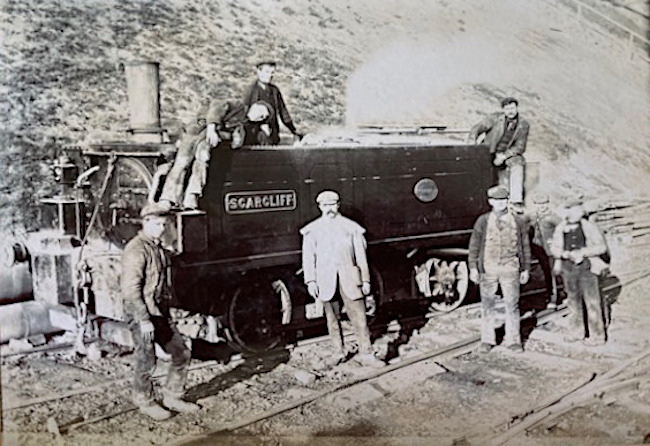Most of the images have been slightly adjusted for better clarity. They may be used without prior permission for any scholarly or educational purpose as long as you (1) credit Helen Hughes and (2) link your document to this URL in a web document or cite the Victorian Web in a print one. Click on all the images to enlarge them.

ick Sullivan, author of Navvyman (Coracle, 1983), has written extensively on the Victorian navvies, a class of labourers whose very name, derived from the word "navigators," links them to harbour or canal work. Gangs of such men took the sobriquet with them as they diversified into new kinds of toil — digging out the railway cuttings and tunnels needed to extend the train services throughout the country. In chapter 20 of his book, entitled "Churching the Ungodly," Sullivan gives some background on Navvy Smith, one of the missionaries who worked with navvy communities.

A missionary at the worksite, with men breaking off from demolishing buildings to listen to him attentively.
Navvy Smith's real name was David Smith, and he was born in 1866 in Newhaven on the Sussex coast, into the family of a smith working on the new harbour there. To summarise, in Sullivan's own words, young David "became a Christian in the 70s, a smith in the '80s, a missionary in the '90s... Later, Navvy Smith became one of his missionaries on the Great Central, running the Good Samaritan Home for tramp navvies at Bulwell, north of Nottingham" (211-12). After that, Navvy Smith, now often known as Daddy Smith, "ran missions at the Catcleugh dam in Northumberland, the Privett tunnel in Hampshire, at Sodbury tunnel, at Shirehampton docks and finally in 1906 and for the next twenty years in Birmingham" (212). These names crop up in the album, confirming Sullivan's biographical data. After this, having by now written countless sermons, Navvy Smith helped edit a missionary magazine.


Different specialisms. Left: Group photograph at a dockside smithy. Right: Group photograph of diggers with their spades, seemingly at the same location. Digging is the work most closely associated with the navvies.

Horses still came in useful. See also Sullivan's illustration, Nippers on the Grand Canal.


More tools of the trade. Left: Acetylene Gas Generator invented and made by Navvy Smith himself, displayed proudly in the album. He had given it the name "Dorothy." Right: Steam- or gas-driven drilling mechanism. Notice the smartly-dressed little boy in the background.


Laying tracks. Left: Chopping down trees. Right: Fetching the sleepers. Again, characteristic navvy work.


Left: Laying the sleepers. Right: Driving crew for an engine important enough to have a name, "Scarcliff." From the handwritten caption, this was for work at Sodbury Tunnel, under the Cotswolds in Gloucestershire. On the far left, again, is the little boy in the smart suit with a broad white collar.

Train crew for a locomotive, with an Irish Mail wagon. The Irish Mail was a service originally used for passengers and mail between Chester and Holyhead. It was absorbed into the London & North-Western in 1859, but its name and connection with North Wales was perpetuated in a class of locomotives used for the Dinorwic Quarries.
Links to Related Material
- Navvy Smith's Photograph Albums, 2: Navvy Mission Activities
- Navvy Smith's Sermons
- The Victorian Navvy
- Victorian Navvies — Their Nationality, Religion, Social Position, and Relation to the Armed Services
Bibliography and Further Reading
Coleman, T. The Railway Navvies: A History of the Men who Made the Railway. London: Hutchinson, 1995.
Kingsford, P. W. Victorian Railwaymen: The Emergence and Growth of Railway Labour, 1830-1870. London: Frank Cass, 1970.
Simmons, Jack. The Victorian Railway. pbk ed. London: Thames & Hudson, 1999.
Sullivan, Dick. Navvyman. Coracle, 1983. [full text in VW]
Created 30 July 2023
Last modified 13 August 2023